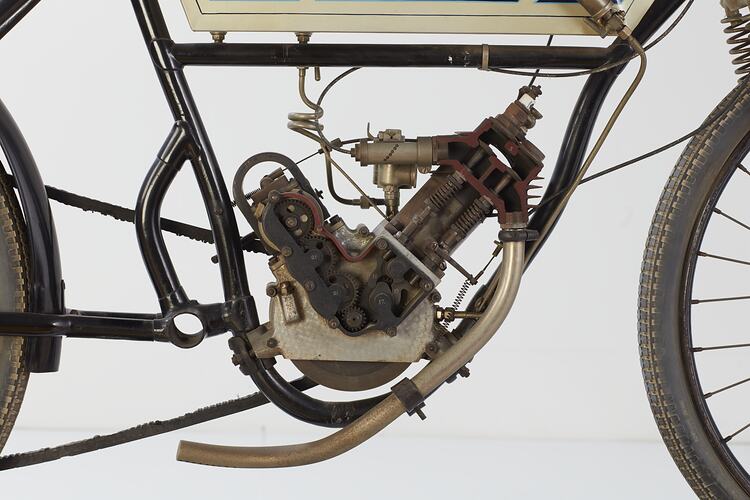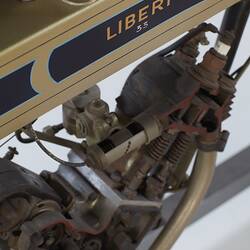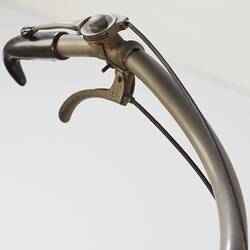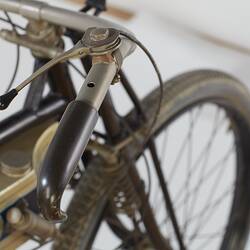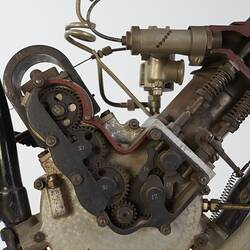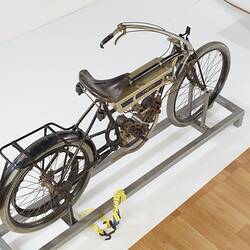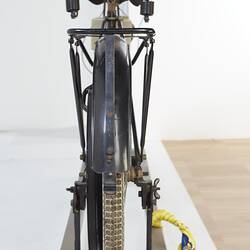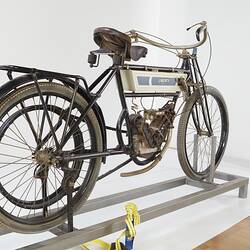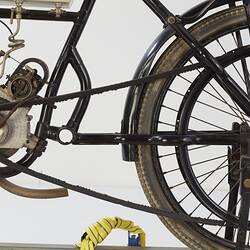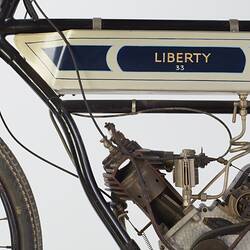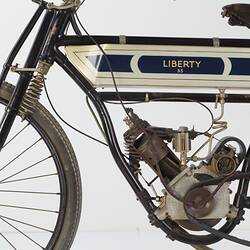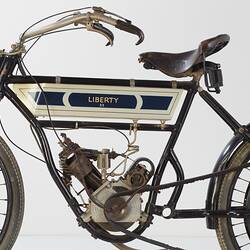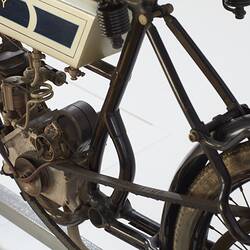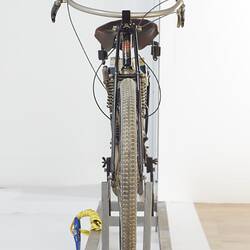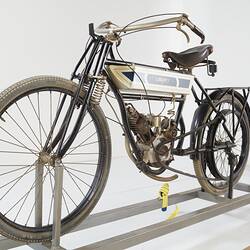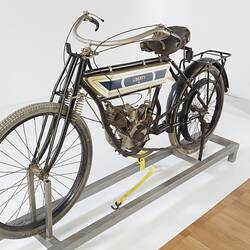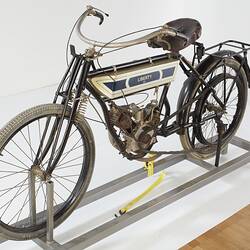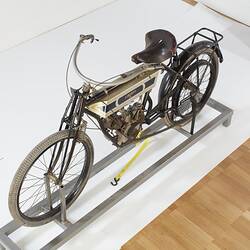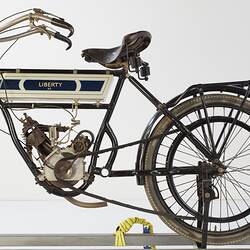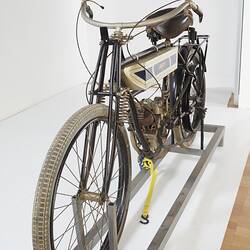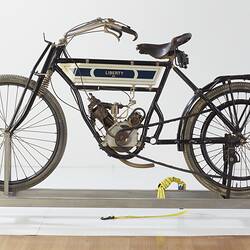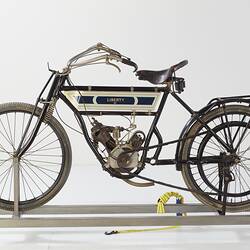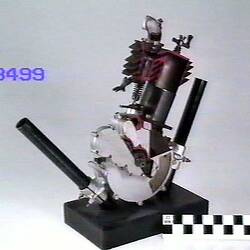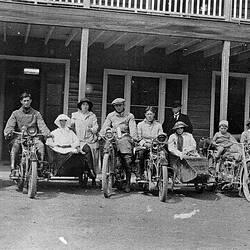Summary
Manufactured in Victoria by the Acme Motor & Engineering Company of 355 Lonsdale Street Melbourne around 1916. It was typical during the two decades before the First World War for bicycle manufacturers to diversify into motor cycle production, often building or assembling motor cycles from largely imported components and selling them under their own brand name. The Liberty brand had been introduced in 1901 for the earlier Acme Cycle Company's range of bicycle components. The first Liberty motor cycle produced by Acme appeared around 1904 using imported Minerva and Chater Lea components. The business was run at this time by partners Sydney Darby and Frank Bennett.
This belt-driven motor cycle is representative of early lightweight designs built before and during the First World War. It is little more than a power assisted bicycle and it retains the pedals, handbrakes and lightweight frame of a bicycle with a single-cylinder four-stroke engine made by S.T.A.S Fritz Moser, St Aubin, Switzerland. Acme also used Fafnir, Blumfield and Peco engines for their machines. The Liberty brand-name was apparently reserved for the single-cylinder model.
To start an early motor cycle like this, the rider would use the pedals like a push bike to gather speed before engaging the clutch to kick the motor over and start it. This motor cycle is particularly significant, not only because it is of Victorian manufacture but also because it has been in the Museum's collection since new and was the first motorcycle purchased for the collection. It cost 24 Pounds when it was acquired from the Acme Motor & Engineering Company in 1916. It is believed to be the only surviving example of a Liberty motor cycle.
Physical Description
Steel frame with rubber drive-belt and tyres. Leather saddle. Single cylinder, 1.75 H.P., four stroke S.T.A.S. engine.
Significance
Early Australian built motor cycle.
More Information
-
Collection Names
-
Collecting Areas
-
Acquisition Information
Purchase
-
Manufacturer
Acme Cycle Co, Lonsdale Street, Melbourne, Greater Melbourne, Victoria, Australia, 1916
-
Manufacturer
S.T.A.S. Fritz Moser, St Aubin, Switzerland, 1915-1916
Manufacturer of engine. -
Inscriptions
Transfer on mud guard reads: "The Acme Cycle Coy, Manufacturers, Lonsdale Street, Melbourne." Fuel tank has painted lettering "Liberty 33" each side.
-
Classification
-
Category
-
Discipline
-
Type of item
-
Overall Dimensions
2005 mm (Length), 520 mm (Width), 1000 mm (Height), 671 kg (Weight)
Weight includes stillage
-
References
[Book] Saward, Robert. 1996. A-Z of Australian-Made Motorcycles., 1996, 116 Pages
-
Keywords
